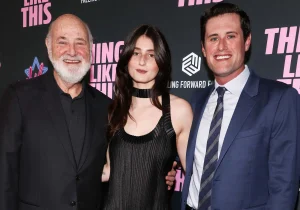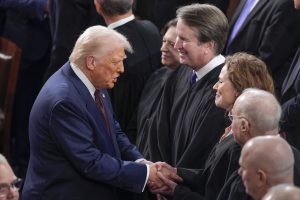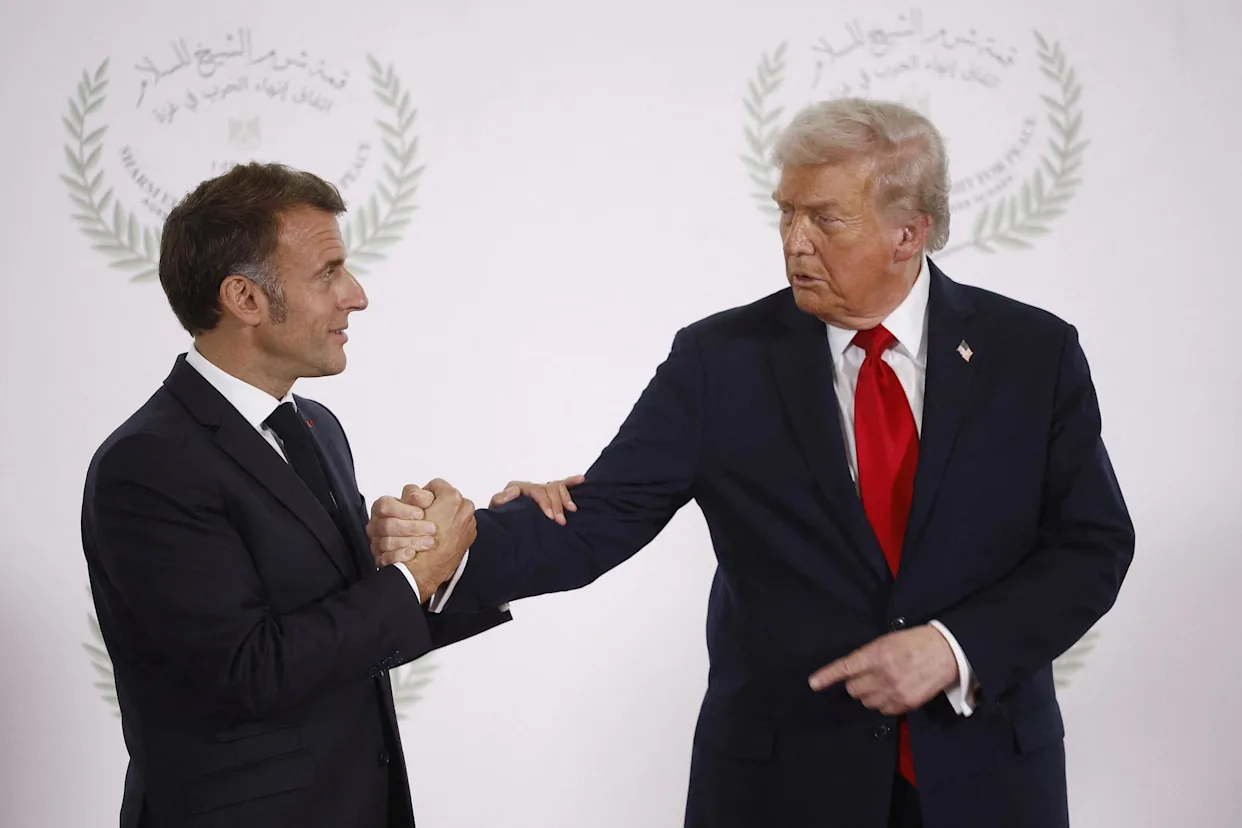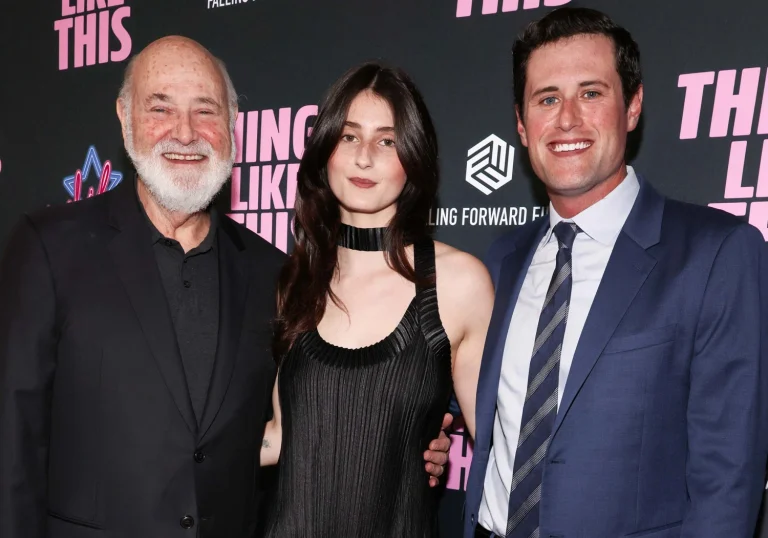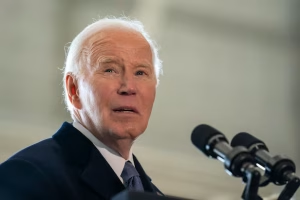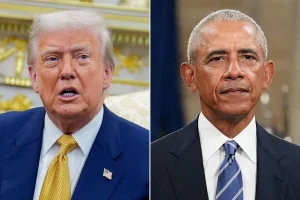In what might be one of the strangest diplomatic displays in recent memory, former U.S. President Donald Trump and French President Emmanuel Macron engaged in a handshake that lasted nearly half a minute during a global summit in Sharm El-Sheikh, Egypt, on October 13, 2025. The encounter has drawn widespread attention, both for its sheer duration and for what a professional lip reader claims were subtle threats and tense exchanges hidden behind the public smiles and photo opportunities.
The Bizarre Handshake
The handshake between Trump and Macron lasted approximately 26 seconds—an unusually long period for a diplomatic greeting. But unlike a traditional handshake, this one involved multiple grip changes, hand pulls, and moments where both leaders appeared to simply hold each other’s hands. Analysts and observers likened it to a silent contest of physical dominance, echoing years of a rollercoaster relationship between the two leaders.
According to lip reader Nicola Hickling, working on footage of the handshake for Mirror US, the hand movements were accompanied by whispered comments that conveyed frustration, defiance, and thinly veiled threats. “It’s not just about the handshake itself; it’s the dialogue happening through body language and subtle speech,” Hickling noted. “When world leaders engage in these extended handshakes, every pause, grip, and tilt can carry meaning.”
Background of Tensions
The handshake occurred against a backdrop of simmering diplomatic tensions. Last month, Macron joined other nations in formally recognizing the state of Palestine, a move that Trump publicly criticized, suggesting that such recognition “honors Hamas.” The comments sparked headlines and fueled speculation that Trump and Macron’s relationship had grown strained.
Despite these tensions, the two leaders met during the summit to discuss the ongoing Gaza ceasefire, which Trump helped broker. The summit included leaders from across the globe, who gathered to celebrate the release of the last remaining Israeli hostages held by Hamas and to discuss ongoing reconstruction and security measures in Gaza.
Decoding the Handshake
Hickling’s analysis of the footage offers a surprising glimpse into the “conversation” taking place amid the unusual display of diplomacy. According to the lip reader, Trump initiated with a seemingly cordial line:
“Nice to see you, so you agreed.”
Macron responded while facing slightly away from cameras:
“Is it genuine?”
The exchange then reportedly escalated in subtle intensity. Trump is said to have stated:
“Okay, so now I want to know why. You hurt me. I already know. I am making peace.”
At one point, Macron tapped Trump’s hand, looked down, and said “excuse me,” after which Trump allegedly tightened his grip, prolonging the handshake further. Macron then reportedly remarked:
“Let’s handle this behind closed doors.”
The tension was amplified when Trump seemingly fired back:
“I only hurt the other.”
Macron responded with a warning that appeared to carry an implicit threat:
“I see. We will see about that – you will see what is about to happen.”
Trump, according to Hickling, countered with a challenge of his own:
“I’d like to see you do it. Do it. I’ll see you in a bit.”
This layered verbal exchange, combined with the unusual physicality of the handshake, left observers both bemused and fascinated, as it highlighted the peculiar dynamics of personal diplomacy at the highest levels.
Public and Media Reactions
Social media users were quick to react, turning the handshake into a viral moment. Comments ranged from humorous to incredulous, with many joking about the spectacle resembling a wrestling match. One Twitter user wrote:
“Diplomacy, but make it WWE.”
Others commented that the handshake looked less like international protocol and more like an arm-wrestling contest. Videos of the handshake, which circulated widely online, were dissected by political commentators and late-night shows alike, becoming a focal point for discussions about Trump and Macron’s sometimes unpredictable interactions.
News outlets also noted that extended handshakes are not unprecedented in diplomacy, but rarely do they approach the kind of intensity and duration witnessed between Trump and Macron. Experts say such gestures can be interpreted as subtle negotiations, psychological games, or demonstrations of dominance—though rarely are the exchanges so physically drawn out.
Trump’s History with Macron
This was far from the first instance of unusual interactions between Trump and Macron. Throughout Trump’s presidency and beyond, he has occasionally mocked the French leader publicly, often referring to him in diminutive or jocular terms. One of the more infamous examples came during a prior meeting where Trump called Macron “Governor Macron,” echoing a longstanding tactic of labeling foreign leaders in ways meant to subtly undermine their authority.
Observers note that these interactions often blend humor, personal rivalry, and political theater, blurring the lines between casual banter and strategic messaging. Analysts suggest that extended handshakes, in this context, may serve as another vehicle for demonstrating psychological influence or asserting dominance during high-stakes international events.
Diplomatic Implications
While many treated the handshake as a bizarre spectacle, diplomats and foreign policy experts emphasize that such moments can carry real significance. The subtle comments captured by lip readers suggest that even seemingly performative gestures can communicate intentions, grievances, or negotiations away from the public eye.
In high-stakes summits like the one in Sharm El-Sheikh, personal interactions often influence broader negotiations. Experts note that understanding body language and whispered exchanges can offer insights into how leaders assess trust, authority, and willingness to cooperate. While the handshake itself was brief, the undercurrents of tension and rivalry between Trump and Macron may have impacted discussions on Gaza, the Middle East, and other international issues addressed at the summit.
Historical Context
Extended, tense handshakes are not new in global diplomacy. Leaders have historically used physical gestures to convey messages beyond words, from firm grips signaling resolve to prolonged contact indicating dominance or negotiation leverage. What sets the Trump-Macron handshake apart is the combination of physical endurance, media scrutiny, and the addition of whispering exchanges that lip readers claim reveal verbal jabs or threats.
Analysts also point out that Trump’s style of personal diplomacy often relies on spectacle, media coverage, and unconventional tactics to assert influence. In this case, the handshake—and the subsequent viral videos—served both as a physical demonstration of engagement and a media event, amplifying the public perception of tension or competition between world leaders.
Broader Summit Developments
The handshake occurred amidst other key diplomatic discussions at the Gaza ceasefire summit. World leaders gathered to witness the signing of the peace agreement after the release of 20 hostages by Hamas, part of a broader deal with Israel. The summit also focused on the deployment of international peacekeeping forces in Gaza, reconstruction initiatives, and long-term strategies for maintaining security and stability in the region.
While the handshake captured global attention, it was just one element of a multi-faceted diplomatic effort. Observers noted that Trump’s high-profile interactions often overshadow procedural or substantive discussions, demonstrating the interplay between personality, media coverage, and international negotiations in modern diplomacy.
Social Media Commentary
Social media reactions ranged from humorous memes to serious analysis. Some commentators likened the handshake to a professional wrestling contest, joking that it resembled a WWE showdown rather than a diplomatic greeting. Others focused on the lip reader’s interpretations, speculating about the implications of Trump’s and Macron’s whispered exchanges.
The incident has sparked debate among political analysts, who argue that such gestures reveal not just personality clashes but also the psychological dynamics underpinning international negotiations. By decoding the subtle verbal and physical cues, experts hope to gain insight into the strategies leaders use to assert influence, test resolve, and gauge counterparts’ intentions during critical moments.
Conclusion
The nearly half-minute handshake between Donald Trump and Emmanuel Macron at the Sharm El-Sheikh summit represents a unique intersection of diplomacy, personal rivalry, and media spectacle. According to professional lip readers, the exchange contained subtle threats, challenges, and expressions of frustration, highlighting the nuanced ways leaders communicate beyond public statements.
While many observers focused on the humor or strangeness of the interaction, diplomats and foreign policy experts underscore that such gestures can carry substantive meaning in high-stakes negotiations. As the world continues to monitor developments in Gaza and broader Middle East diplomacy, moments like the Trump-Macron handshake offer a rare glimpse into the interpersonal dynamics that shape international relations.
Whether interpreted as a strategic maneuver, a personal challenge, or a bizarre spectacle, the handshake has cemented itself in public consciousness as one of the most unusual diplomatic moments of 2025, reflecting both the idiosyncrasies of the leaders involved and the complex, often performative nature of modern global politics.

Emily Johnson is a critically acclaimed essayist and novelist known for her thought-provoking works centered on feminism, women’s rights, and modern relationships. Born and raised in Portland, Oregon, Emily grew up with a deep love of books, often spending her afternoons at her local library. She went on to study literature and gender studies at UCLA, where she became deeply involved in activism and began publishing essays in campus journals. Her debut essay collection, Voices Unbound, struck a chord with readers nationwide for its fearless exploration of gender dynamics, identity, and the challenges faced by women in contemporary society. Emily later transitioned into fiction, writing novels that balance compelling storytelling with social commentary. Her protagonists are often strong, multidimensional women navigating love, ambition, and the struggles of everyday life, making her a favorite among readers who crave authentic, relatable narratives. Critics praise her ability to merge personal intimacy with universal themes. Off the page, Emily is an advocate for women in publishing, leading workshops that encourage young female writers to embrace their voices. She lives in Seattle with her partner and two rescue cats, where she continues to write, teach, and inspire a new generation of storytellers.

